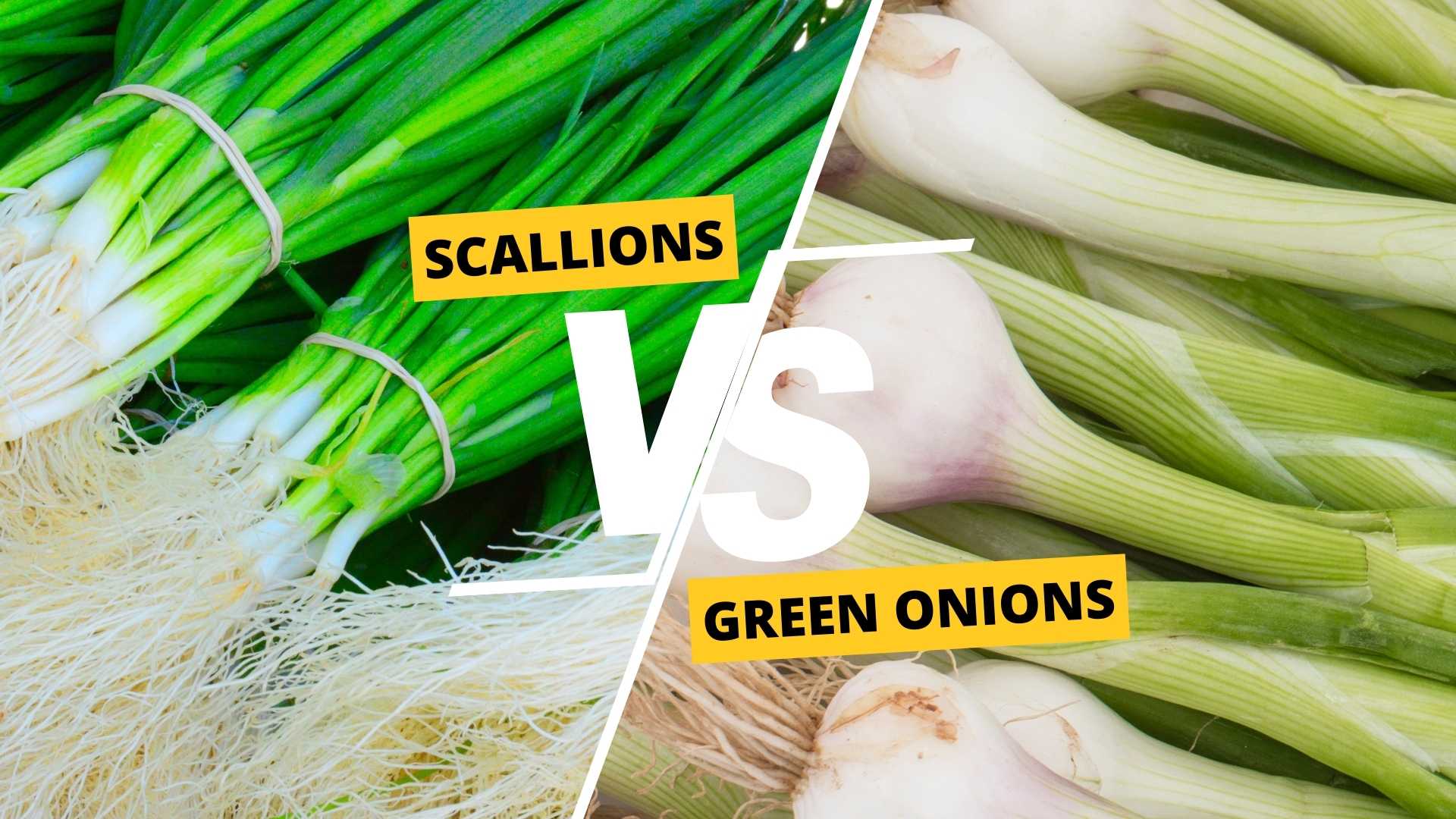Scallions and green onions are two popular ingredients in the culinary world, and the terms are often used interchangeably. However, there are some key differences between these two plants that can impact the flavor and texture of your dishes.
In this article, we will explore the differences between scallions and green onions, their culinary uses, nutritional benefits, how to grow them, and which one to choose for your recipes.
Comparison of Scallions vs Green Onions
Definition and Characteristics
Scallions and green onions are both members of the allium family, which also includes garlic and onions. However, scallions are specifically Allium fistulosum, while green onions can be Allium fistulosum, Allium cepa, or Allium ascalonicum, depending on the variety. Scallions are also sometimes referred to as spring onions or Welsh onions.
The physical characteristics of scallions and green onions are quite similar, which is why they are often mistaken for each other. Both have long, thin green leaves and a white bulb at the bottom. However, scallions have a straight, cylindrical shape, while green onions have a slight bulge at the base of the leaves. Green onions also tend to have a slightly larger bulbs than scallions.
Culinary Uses
Scallions and green onions are both used in a variety of dishes, but there are some subtle differences in their culinary uses. Scallions are often used raw in salads, as a garnish for soups and stews, or chopped and mixed into dips or sauces. They have a mild onion flavor that is not overpowering, making them a great choice for adding a bit of flavor without overwhelming other ingredients.
Green onions, on the other hand, have a slightly stronger flavor than scallions and are often cooked in stir-fries, sautés, or grilled dishes. They add a bit more depth of flavor to a dish and can stand up to stronger ingredients. However, green onions can also be used raw as a garnish or in salads.
Nutritional Benefits
Scallions and green onions are both low in calories and high in vitamins and minerals. They are a good source of vitamin C, vitamin K, folate, and potassium. Scallions also contain antioxidants and compounds that may have anti-inflammatory properties, while green onions contain sulfur compounds that may have immune-boosting benefits.
In terms of nutritional differences, scallions are slightly higher in vitamin C and folate, while green onions are slightly higher in vitamin K and potassium. However, the differences are not significant, and both plants offer similar nutritional benefits.
Growing Scallions and Green Onions
Scallions and green onions are both relatively easy to grow and can be grown in a variety of climates. They prefer well-drained soil and plenty of sunlight. Scallions can be grown from seed or from bulbs, while green onions are typically grown from bulbs. Both plants can be grown in containers or in the ground.
To plant scallions, you can sow the seeds directly in the soil or plant bulbs in the fall. Green onions can be planted in the fall or spring, depending on the variety. They prefer cool weather and can tolerate light frost.
Scallions vs Green Onions: Which One to Choose?
The choice between scallions and green onions will depend on your recipe and personal preference. If you want a milder onion flavor or plan to use the ingredient raw, scallions are a good choice. If you want a stronger onion flavor or plan to cook the ingredient, green onions are a better choice.
In general, scallions are more versatile and can be used in a wider variety of dishes than green onions. They are a great choice for adding a subtle onion flavor to salads, sandwiches, and dips. Green onions, on the other hand, are best suited for dishes where a stronger onion flavor is desired, such as stir-fries, soups, and stews.
It’s worth noting that scallions and green onions can be used interchangeably in many recipes, especially those that call for a small amount of onion flavor. If a recipe specifically calls for scallions or green onions, it’s best to use the specified ingredient to ensure the desired flavor and texture.
Frequently Asked Questions
Can scallions and green onions be substituted for each other in recipes?
Yes, in many cases scallions and green onions can be used interchangeably in recipes.
How do I store scallions and green onions?
Scallions and green onions should be stored in the refrigerator in a plastic bag or container. They will keep for up to a week.
Can I grow scallions and green onions indoors?
Yes, scallions and green onions can be grown indoors in containers. They prefer a sunny location and well-drained soil.
Are scallions and green onions the same as chives?
No, chives are a different plant that belong to the same family as scallions and green onions. Chives have a more delicate flavor and are typically used as a garnish or in dips and spreads.
Conclusion
Scallions and green onions are both versatile ingredients that can add flavor and nutrition to your dishes. While they are similar in appearance and flavor, there are some subtle differences that can impact their culinary uses.
Whether you choose scallions or green onions will depend on your recipe and personal preference. By understanding the differences between these two plants, you can choose the best ingredient for your dishes and enjoy the many benefits of these delicious and nutritious ingredients.
